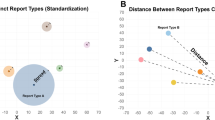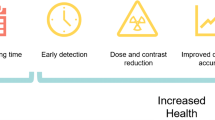Abstract
Venous thromboembolism (VTE) is a potentially life-threatening condition that includes both deep vein thrombosis (DVT) and pulmonary embolism. We sought to improve detection and reporting of children with a new diagnosis of VTE by applying natural language processing (NLP) tools to radiologists’ reports. We validated an NLP tool, Reveal NLP (Health Fidelity Inc, San Mateo, CA) and inference rules engine’s performance in identifying reports with deep venous thrombosis using a curated set of ultrasound reports. We then configured the NLP tool to scan all available radiology reports on a daily basis for studies that met criteria for VTE between July 1, 2015, and March 31, 2016. The NLP tool and inference rules engine correctly identified 140 out of 144 reports with positive DVT findings and 98 out of 106 negative reports in the validation set. The tool’s sensitivity was 97.2% (95% CI 93–99.2%), specificity was 92.5% (95% CI 85.7–96.7%). Subsequently, the NLP tool and inference rules engine processed 6373 radiology reports from 3371 hospital encounters. The NLP tool and inference rules engine identified 178 positive reports and 3193 negative reports with a sensitivity of 82.9% (95% CI 74.8–89.2) and specificity of 97.5% (95% CI 96.9–98). The system functions well as a safety net to screen patients for HA-VTE on a daily basis and offers value as an automated, redundant system. To our knowledge, this is the first pediatric study to apply NLP technology in a prospective manner for HA-VTE identification.

Similar content being viewed by others
References
Sabapathy CA, Djouonang TN, Kahn SR, Platt RW, Tagalakis V (2016) Incidence trends and mortality from childhood venous thromboembolism: a population-based cohort study. J Pediatr 172:175–180.e1
Witmer C, Davis D, Branchford B, Jaffray J, Doellman D, Raffini L et al (2016) Children’s Hospitals’ Solutions for Patient Safety recommended bundles: adverse drug events and venous thromboembolism. Children’s Hospitals’ Association
Gillespie MA, Lyle CA, Goldenberg NA (2015) Updates in pediatric venous thromboembolism. Curr Opin Hematol 22(5):413–419
Goudie A, Dynan L, Brady PW, Fieldston E, Brilli RJ, Walsh KE (2015) Costs of venous thromboembolism, catheter-associated urinary tract infection, and pressure ulcer. Pediatrics 136(3):432–439
Monagle P, Adams M, Mahoney M, Ali K, Barnard D, Bernstein M et al (2000) Outcome of pediatric thromboembolic disease: a report from the Canadian Childhood Thrombophilia Registry. Pediatr Res 47(6):763–766
Mahajerin A, Branchford BR, Amankwah EK, Raffini L, Chalmers E, van Ommen CH et al (2015) Hospital-associated venous thromboembolism in pediatrics: a systematic review and meta-analysis of risk factors and risk-assessment models. Haematologica 100(8):1045–1050
Simpao AF, Pruitt EY, Cook-Sather SD, Gurnaney HG, Rehman MA (2012) The reliability of manual reporting of clinical events in an anesthesia information management system (AIMS). J Clin Monit Comput 26:437–439
Haller G, Myles PS, Stoelwinder J, Langley M, Anderson H, McNeil J (2007) Integrating incident reporting into an electronic patient record system. J Am Med Inform Assoc 14:175–181
Branchford BR, Gibson E, Manco-Johnson MJ, Goldenberg NA (2012) Sensitivity of discharge diagnosis ICD-9 codes for pediatric venous thromboembolism is greater than specificity, but still suboptimal for surveillance and clinical research. Thromb Res 129(5):662–663
McPeek Hinz ER, Bastarache L, Denny JC (2013) A natural language processing algorithm to define a venous thromboembolism phenotype. AMIA Annu Symp Proc 2013:975–983
Melton GB, Hripcsak G (2005) Automated detection of adverse events using natural language processing of discharge summaries. J Am Med Inform Assoc 12(4):448–457
Benson M, Junger A, Michel A, Sciuk G, Quinzio L, Marquardt K et al (2000) Comparison of manual and automated documentation of adverse events with an Anesthesia Information Management System (AIMS). Stud Health Technol Inform 77:925–929
Peterfreund RA, Driscoll WD, Walsh JL, Subramanian A, Anupama S, Weaver M et al (2011) Evaluation of a mandatory quality assurance data capture in anesthesia: a secure electronic system to capture quality assurance information linked to an automated anesthesia record. Anesth Analg 112:1218–1225
Tian Z, Sun S, Eguale T, Rochefort CM (2015) Automated extraction of VTE events from narrative radiology reports in electronic health records: a validation study. Med Care. doi:10.1097/MLR.0000000000000346
Rochefort CM, Verma AD, Eguale T, Lee TC, Buckeridge DL (2015) A novel method of adverse event detection can accurately identify venous thromboembolisms (VTEs) from narrative electronic health record data. J Am Med Inform Assoc 22(1):155–165
Sager N, Lyman M, Nhan NT, Tick LJ (1995) Medical language processing: applications to patient data representation and automatic encoding. Methods Inf Med 34(1–2):140–146
Friedman C, Alderson PO, Austin JH, Cimino JJ, Johnson SB (1994) A general natural-language text processor for clinical radiology. J Am Med Inform Assoc 1(2):161–174
Wu Y, Denny JC, Rosenbloom ST, Miller RA, Giuse DA, Xu H (2012) A comparative study of current clinical natural language processing systems on handling abbreviations in discharge summaries. AMIA Annu Symp Proc 2012:997–1003
National Library of Medicine (2017) SNOMED CT https://www.nlm.nih.gov/healthit/snomedct/. Accessed 7 Feb 2017
Funding
This work was conducted without funding support from any external agency.
Author information
Authors and Affiliations
Contributions
The following individuals contributed to (1) conception and design, acquisition of data, or analysis and interpretation of data; (2) drafting the article or revising it critically for important intellectual content; and (3) final approval of the version to be published. JG, JP, LA, JM, AS, MR and CW. JG may be considered as a guarantor for the integrity of the work, from inception to published article.
Corresponding author
Ethics declarations
Conflict of interest
The authors have no competing interests to declare.
Human Subjects Protections
This study evaluated the performance of a natural language processing algorithm that is being used in a clinical production environment. The institutional review board did not review the study because the data sets for analysis were de-identified.
Rights and permissions
About this article
Cite this article
Gálvez, J.A., Pappas, J.M., Ahumada, L. et al. The use of natural language processing on pediatric diagnostic radiology reports in the electronic health record to identify deep venous thrombosis in children. J Thromb Thrombolysis 44, 281–290 (2017). https://doi.org/10.1007/s11239-017-1532-y
Published:
Issue Date:
DOI: https://doi.org/10.1007/s11239-017-1532-y




